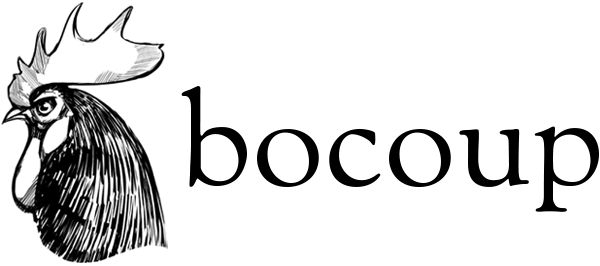-

Nicole Sullivan: Keynote
Nicole is a UI performance nerd living and working in San Francisco. She helps companies make their CSS smaller and their UI more manageable. She is also an author, most recently contributing to the Web Performance Daybook Volume 2.
-

Jed Schmidt: Host
Jed is the guy behind projects as diverse as browserver, ramendan, and 140byt.es, and notorious for his entertainer qualities. As CSSconf.eu’s host he will guide you through the program.
-

Razvan Caliman: Cutting-edge CSS features - Gaining control of Web Design
New features in CSS allow designers to treat the web as a first-class design surface, just as they expect with other media. These features open up new design options such as - the ability to wrap and clip text around custom paths, better layout control for responsive design across different viewport sizes and the ability to blend together background images. During this talk, you will learn how CSS Shapes, CSS Regions and background blend modes can help create engaging user experiences and how to start using them now.
-

Chris Eppstein: The Mind-blowing Power of Sass 3.3
Sass 3.3 is coming soon and there are some amazing new features in it. In this talk, Sass & Compass creator and maintainer, Chris Eppstein, will show you how to use the new features in Sass 3.3 to create stylesheet authoring capabilities that you may have never thought possible. From integrated development in Chrome, to optimizing your mixin’s output and new strategies for wrangling media queries. This talk is targeted at people familiar with the existing features in Sass. Prepare to have your mind blown.
-

Angelina Fabbro: CSS Levels Up
CSS2, CSS3, CSS…4? This talk will explore a little bit of CSS past and present, disambiguate some version terminology (levels? modules?), and then dive into potential CSS future. We’ll examine what the Level 4 specifications bring to the table and what those new features could mean for the future of web development. Selectors, media queries, backgrounds, images, and text all have fresh recommendations to improve the web ecosystem. We’ll explore a little of each so you can be thinking ahead. The current state of polyfills and shims will be discussed so that the brave can forge ahead. We will also touch upon how a specification eventually becomes a feature so that you can understand the development of CSS, as well as where to go to participate in the discussions shaping the web of the future.
-

Peter Gasston: Future CSS in Web Components
Web Components are set to revolutionise the way we create web pages, and a key role in that revolution will be played by CSS. Scoped styles and variables are vital to the reusability of content modules which Web Components bring, while more advanced proposals even allow the application of markup through style… This talk will introduce the core features of the future web - templates, custom elements and Shadow DOM - with a strong emphasis on new and repurposed CSS properties and capabilities.
-

Rachel Nabors: Animation Studio Power Techniques with CSS
Award winning cartoonist turned front-end developer Rachel Nabors will change how you think about web design forever. Learn how to make CSS do backflips to reproduce traditional animation techniques like walk cycles, scene transitions, and parallax. Save time and energy with conservative techniques like cut outs, pioneered by Japanese studios to accelerate the animation process. Understand the physics behind timing functions like ease-in to create subtle skeuomorphism. CSS animations and transitions are powerful new tools in the interactive design arsenal. With these babies at your command, all new possibilities for user experiences begin to unfold.
-

Shubhie Panicker: CSS module system in Google+
While module systems like AMD and CommonJS have become common place for Javascript, CSS has been lagging behind. Why modular CSS? In large scale apps managing CSS dependencies is cumbersome. Lack of granular CSS deps leads to pulling in unnecessary CSS on page render causing bloat. When refactoring code, the CSS order can change disfiguring the rendered page. Also, since it’s hard to know which CSS effects which parts of the page, all of the CSS is bundled together and downloaded at initialization, so the initial page load time is slowed down. This talk describes the new CSS dependency system in Google+. It improves end user latency by initially loading only a small set of CSS, and late loading CSS modules, as needed. It improves maintainability, making refactoring easier. Finally, the dependency system enables packaging HTML, CSS and Javascript together into distinct UI elements for reusability, and fewer wiring points boost developer productivity.
-

Harry Roberts: Normalising designs for better quality CSS
It’s hard to deny that websites need to be well designed; a pleasing UI, a seamless and pleasant UX, and a great personality really encourage users to interact and enjoy using your site, product or service. However, the design is only one part of a finished product; your product is built on code, and oftentimes it is necessary to sacrifice certain aspects of a design in order to keep the codebase itself leaner, faster, and more enjoyable to work with. In this talk Harry aims to share some of his die-hard pragmatic approaches that he employs in order to push back on designs to produce far better quality code.
-

Alex Sexton: Pooping out CSS
Just about everyone is using a CSS preprocessor these days. Some like them just for the variables, and others use all the crazy inline functions and whitespace significance features. They’re often treated as black boxes. My code goes in, and CSS comes out. This talk will be a deep dive into the digestive tract of your CSS preprocessor. Learn how your original code is parsed and stored, and then how that information is used to generate valid CSS. If there’s time, we’ll also talk about introducing parasites into your system for some interesting looking results!
-

Ana-Maria Tudor: Maths-powered transforms for creating 3D shapes
Transforms are incredibly powerful and immensely helpful when we want to create any kind of polygon starting from humble rectangles. Or when we want to take these polygonal shapes and assemble them into polyhedra. Or even when we want to create various 3D surfaces starting from nothing more than a curvy border. Understanding the mathematical reasoning behind these transforms allows you to achieve wonderful and visually stunning effects.
-

Mike West: XSS. (No, the _other_ "S")
Cross-site scripting attacks are dangerous, and common enough that you're all probably familiar with them. Unfortunately that last word, "scripting", has ensured that our collective understanding of injection attacks remains fundamentally tied up with JavaScript. Cross-site _styling_ is actually more capable than you might expect; it's quite possible to exfiltrate sensitive data (like passwords!) without any script at all. This talk will walk through some of the cleverly malicious activity that CSS makes possible, and discuss some mechanisms for mitigating the risk that your sites and applications might be effected.
Sponsors















At CSSconf.eu 2013, the best CSS developers will gather in Berlin, Germany for a conference that will showcase the future of CSS development.
We have a wide variety of sponsoring opportunities available. Talk to us: contact@cssconf.eu